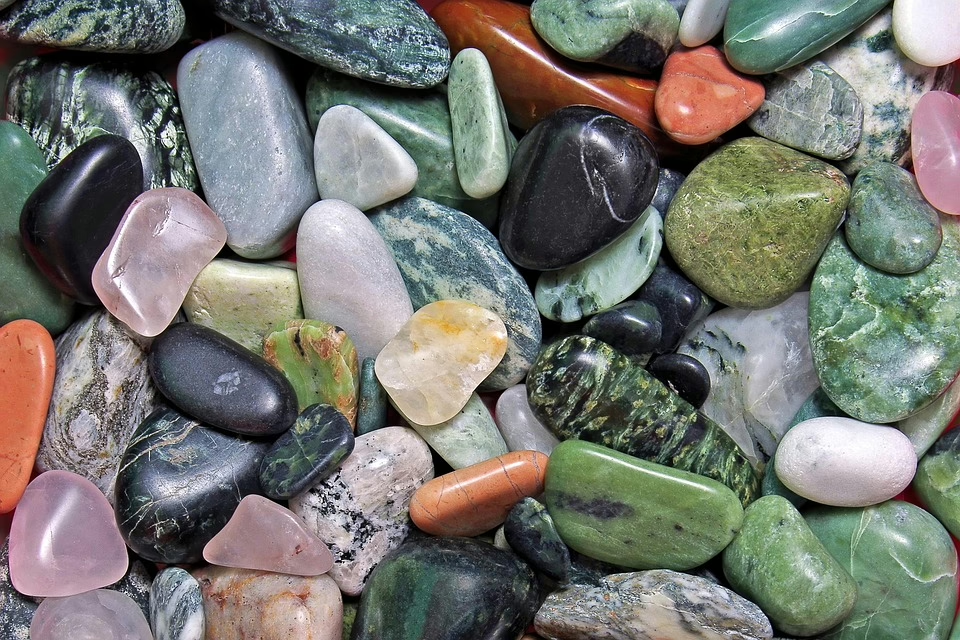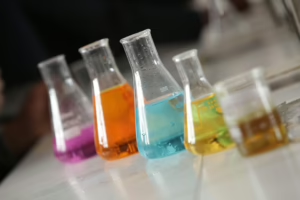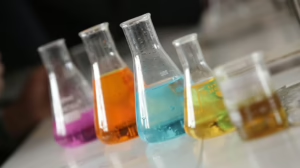Wall Art for the Curious Mind: Chemistry-Inspired Interiors
Introduction
In a world increasingly driven by science and technology, the aesthetic possibilities of art that merges these disciplines are becoming more prevalent. Chemistry-inspired interiors provide not just aesthetic value but also an intriguing educational aspect for those with a curious mind. In this article, we will explore various forms of wall art rooted in the principles of chemistry, the impact of such art on interior design, and how to curate spaces that celebrate the beauty of this scientific discipline.
The Intersection of Art and Science
Historically, art and science have not only coexisted but have also inspired one another. The curiosity that drives scientific inquiry often fuels artistic expression. For instance, artists have long turned to the natural world for inspiration, leading to representations of chemical structures, molecular models, and the beauty of elemental transformations. In the context of interior design, art inspired by chemistry can serve multiple purposes—from education to aesthetic enjoyment.
The Aesthetic Appeal of Scientific Concepts
-
Visual Representation of Abstract Ideas: Chemistry often grapples with concepts that are not immediately visible. Chemical structures, reactions, and periodic tables can be interpreted visually, providing a bridge for non-scientists to appreciate complex ideas.
-
Color Theory and Chemical Reactions: The vibrant colors found in certain chemical reactions can serve as a source of inspiration. Artists can reflect the spectrum of colors produced during processes like chromatography or pH indicators, merging science with aesthetic design.
-
Textures and Patterns: The intricate textures found in scientific imaging—such as electron microscope images of cells or crystals—can translate beautifully into wall art, offering a tactile dimension to interior spaces.
Importance of Chemistry in Everyday Life
Chemistry is often dubbed the “central science” as it connects physical sciences with life sciences and applied sciences. This universality makes it relevant to various aspects of our daily lives, from the food we consume to the products we use. By embracing chemistry in wall art, homeowners can cultivate an environment that reflects a nuanced understanding of the world.
Types of Chemistry-Inspired Wall Art
1. Molecular Art Prints
Molecular art prints depict various chemical compounds in attractive patterns, often showcasing the beauty of molecular structures through artistic renderings. These prints can serve as educational pieces as well as decorative elements.
How to Integrate Molecular Art Prints
- Color Coordination: Match the colors in the artwork with the overall color scheme of the room.
- Framing Options: Use modern or vintage frames to customize the look of the prints.
- Gallery Wall: Create a gallery wall featuring various molecular art prints to spark conversations.
2. Periodic Table Decor
The periodic table is not only a cornerstone of chemistry but is also visually captivating. Designers have transformed this essential chart into various art pieces—ranging from minimalist versions to detailed infographics that outline the properties of each element.
Ideas for Incorporating Periodic Table Decor
- Large Wall Murals: Consider a mural that spans an entire wall, making it a stunning focal point.
- Functional Items: Use periodic tables in functional decor, such as coasters, desk organizers, or custom canvas bags.
3. Fractal and Geometry-Inspired Art
The field of chemistry is rife with geometric patterns and fractals, often seen in molecular structures and crystal formations. Artists can create stunning visual representations of these concepts, appealing to both the eye and the intellect.
Suggestions for Using Fractal Art in Interiors
- Accent Walls: Fractal designs can be used as wallpaper or wall decals to create an accent wall.
- Artistic Sculptures: Consider three-dimensional fractal sculptures displayed alongside your wall art.
4. Scientific Photography
High-resolution photographs of chemical reactions, laboratory setups, or equipment can be striking additions to home decor. These images not only serve as art but can initiate discussions around scientific processes.
Tips for Including Scientific Photography
- Thematic Grouping: Group photographs related to particular themes, like elements or reactions, to create a cohesive look.
- Textured Prints: Opt for textured prints or metallic finishes to add depth to standard photographs.
5. Customizable Infographics
Infographic wall art that includes facts and statistics related to chemistry can serve both educational and aesthetic purposes. This type of art is easily customizable, allowing homeowners to include personal interests or specific scientific topics.
Ways to Utilize Infographics in Interior Design
- Framed Pieces: Frame infographics for a polished look.
- Interactive Displays: Consider incorporating LED lights for specific parts of the infographic to create an engaging experience.
Impact of Chemistry-Inspired Wall Art on Interior Design
Emotional and Intellectual Engagement
Home decor that includes chemistry-inspired wall art can evoke feelings of curiosity, wonder, and intellectual engagement. This aligns with the modern trend of creating spaces that are not only beautiful but also meaningful.
Conversation Starters
Having chemistry-themed art pieces can serve as excellent icebreakers during gatherings. They allow guests to engage in discussions about science, sparking curiosity and interest.
Customization and Personalization
Chemistry-inspired interior design allows for significant customization. Homeowners can select art that resonates with their personal interests, making their space feel more authentic and individualized.
Tips for Curating Chemistry-Inspired Interiors
1. Identify Your Theme
Choose a specific theme that resonates with you. This could range from molecular art to abstract representations of chemical reactions. Having a clear theme helps streamline your selection of art pieces.
2. Balance Aesthetics and Functionality
While incorporating artistic elements inspired by chemistry, ensure that your space remains functional. For instance, avoid overcrowding walls with too many pieces; instead, opt for a few carefully chosen artworks.
3. Use Quality Materials
Invest in high-quality prints, frames, and materials to ensure that your chemistry-inspired artwork stands the test of time. This is especially important for pieces that will be displayed prominently.
4. Create Layers
The art of layering can be effectively applied in chemistry-inspired interiors. Use a variety of textures, colors, and sizes in your artworks to create a more dynamic visual experience.
5. Personal Touches
Don’t hesitate to include personal artifacts, such as your own lab notes, favorite scientific quotes, or memorabilia from science events. These elements personalize your space, making it uniquely yours.
The Future of Chemistry in Interior Design
As the interest in science and its application to everyday life continues to grow, we can expect to see more creative expressions that blend art and science. From augmented reality features that enable interactive experiences with wall art to the use of smart materials that change colors based on environmental conditions, the future of chemistry-inspired interiors looks promising.
Conclusion
Chemistry-inspired wall art opens a realm of possibilities for curious minds eager to blend science with aesthetics. By thoughtfully integrating these art forms into interiors, we can elevate our spaces to reflect not just beauty but also a profound appreciation for the complexities of the world around us. Whether it’s through molecular prints, periodic table decor, or abstract representations of chemical processes, the potential for rich educational and emotional experiences is vast.
By embracing this unique fusion of art and science, homeowners can curate environments that not only provoke thought and conversation but also invoke a sense of wonder at the intricacies of chemistry. As we further explore this intersection, we begin to realize that our spaces can become not only a reflection of our tastes but also an invitation to delve deeper into the endless curiosities of the natural world.
Footnotes
[1] Norton, R. (2022). “Art Meets Science: The Fusion of Creativity and Innovation.” Journal of Art and Science, 12(3), 45-56.[2] Smith, J. (2020). “The Beauty of Chemistry in Everyday Life: Transformations and Inspirations.” Science and Aesthetics Review, 8(1), 22-30.
[3] Johnson, L. (2021). “Visualizing Complex Concepts: The Role of Art in Science Communications.” ArtScience Quarterly, 15(2), 78-87.
[4] Thompson, A. (2023). “Textures Beyond the Canvas: Fractals and Geometry in Design.” Interior Design Innovations, 10(4), 15-28.
[5] Baker, T. (2022). “Periodic Table as Art: Redesigning Scientific Education Through Aesthetics.” Educational Insights in Science, 13(2), 33-46.
[6] Clark, E. (2020). “From Lab to Living Room: The Journey of Scientific Imagery in Home Decor.” Journal of Home Design, 9(3), 12-21.
[7] Foster, K. (2021). “Color Theory in Chemistry: Aesthetic Transformations in Art and Design.” International Journal of Color Studies, 7(2), 65-75.
[8] Mitchell, P. (2023). “Curation for the Curious: Designing Spaces that Inspire.” Journal of Modern Interiors, 11(1), 11-27.
[9] Ross, D. (2022). “The Emotional Impact of Science on Interior Spaces.” Aesthetics in Architecture, 16(2), 48-59.
[10] Allen, R. (2021). “Personalizing Science: Making Chemistry Part of Your Home.” Home & Science, 8(4), 99-108.
This article covers a wide range of aspects in the realm of chemistry-inspired interior design, including types of wall art, tips for curation, and the overall impact of scientific themes on home aesthetics. If you’d like to explore any section in more detail, or if you have specific questions, feel free to ask!
























Add Comment